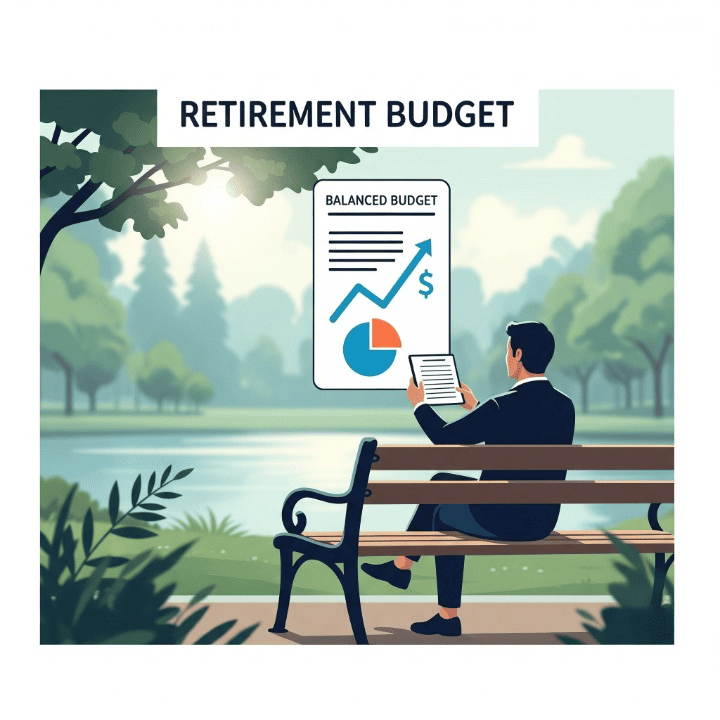
Introduction
For many, the idea of retirement is about freedom—the freedom to travel, to pursue hobbies, and to spend more time with family. However, this freedom comes with a significant financial responsibility. You will no longer have a regular paycheck, so your retirement savings must support your lifestyle for decades. The key to a secure and worry-free retirement is having a clear understanding of your finances, and the most important tool for this is a retirement budget. A retirement budget is not a restrictive plan; it is a roadmap that helps you align your spending with your financial resources. It’s a fundamental part of your retirement planning strategy. This comprehensive guide will walk you through the essential steps to create a retirement budget that works for you, ensuring you can manage your money with confidence and peace of mind.
Step 1: Track Your Current Spending
Before you can budget for the future, you need to understand your present. The first and most crucial step is to track your current spending for at least a few months. This process will give you an accurate picture of your cash flow and living expenses. Don’t leave anything out. This includes your mortgage, utilities, groceries, and any discretionary spending like dining out or subscriptions. You can use a spreadsheet, a budgeting app, or a simple notebook to record this information. Be as detailed as possible. The goal is to see where your money is actually going, not where you think it’s going. This information will be the foundation for your entire retirement budget.
Step 2: Categorize and Adjust Your Future Expenses
Your expenses in retirement will likely look different from your expenses today. Some costs will disappear, while others will increase. The next step is to project your future expenses based on your current spending habits and anticipated lifestyle changes.
Expenses That May Decrease
- Work-Related Costs: You will no longer have a commute, so you won’t need to pay for gas, public transit, or professional clothing.
- Mortgage Payments: Ideally, you will have paid off your mortgage by the time you retire. If not, this will still be a significant expense.
- Saving for Retirement: You won’t be contributing to your 401(k) or IRA anymore, which frees up a significant portion of your income.
Expenses That May Increase
- Healthcare: This is a major one. Most people will be on Medicare, but you still need to budget for premiums, deductibles, and out-of-pocket costs for things Medicare doesn’t cover.
- Travel and Hobbies: You will have more free time, and many people spend more on travel and hobbies in their early retirement years.
- Long-Term Care: This is a major financial risk. The costs of assisted living or a nursing home can be staggering. You should plan for this, either with a long-term care insurance policy or with a dedicated savings fund.
Once you have your projected expenses, you can create a budget that reflects your new reality. The most important thing is to ensure your total monthly expenses are less than your total monthly income from all sources.
Step 3: Project Your Retirement Income
Now that you have your expenses, you need to figure out where your income will come from. A well-designed retirement planning strategy diversifies income from multiple sources.
1. Social Security
This will be a foundational part of your income. You can get an estimate of your future Social Security benefits by creating an account on the Social Security Administration’s website. Remember that your monthly benefit will be permanently changed depending on when you claim it.
2. Retirement Accounts
The money you’ve saved in your 401(k), IRA, or other retirement accounts will be a primary source of your income. Financial planners often use a 4% withdrawal rule as a starting point. This rule suggests you can withdraw 4% of your portfolio’s value in the first year of retirement and adjust that amount for inflation each year. It’s designed to make your money last for 30 years.
3. Pensions and Annuities
If you are fortunate enough to have a pension from a former employer, this will provide a guaranteed stream of income for life. An annuity can also provide a similar guaranteed income stream.
4. Other Sources of Income
Do you have a rental property that provides income? Will you work part-time in retirement? Will you have dividends from a portfolio of dividend stocks? Factor in all these sources to get a complete picture of your retirement income.
Step 4: Live Out a “Trial Run” Budget
Once you have your projected expenses and income, it’s a good idea to practice. Live for a month or two on your projected retirement budget. This exercise will show you what your financial life will really look like. You might discover that your travel budget is too small or that your spending on dining out is much higher than you thought. This allows you to make adjustments to your investing and spending long before you actually retire.
Step 5: Regular Review and Adjustments
Your retirement budget is not a set-it-and-forget-it tool. It’s a living document that needs to be reviewed and adjusted regularly. Life is unpredictable. Inflation, market fluctuations, and unexpected expenses will happen. You should review your budget at least once a year and make adjustments as needed. This ensures your budget remains relevant and effective, helping you stay on track to achieve your financial goals.
Conclusion
A retirement budget is a powerful tool for achieving financial freedom. It provides a clear roadmap that helps you align your spending with your income and ensures you can enjoy your retirement without financial stress. By understanding your expenses, projecting your income from all sources, and consistently reviewing your plan, you can build a secure and prosperous future. The decisions you make today will shape your financial reality for decades to come. Don’t wait to start. Take control of your retirement planning and build the life you’ve always dreamed of.



